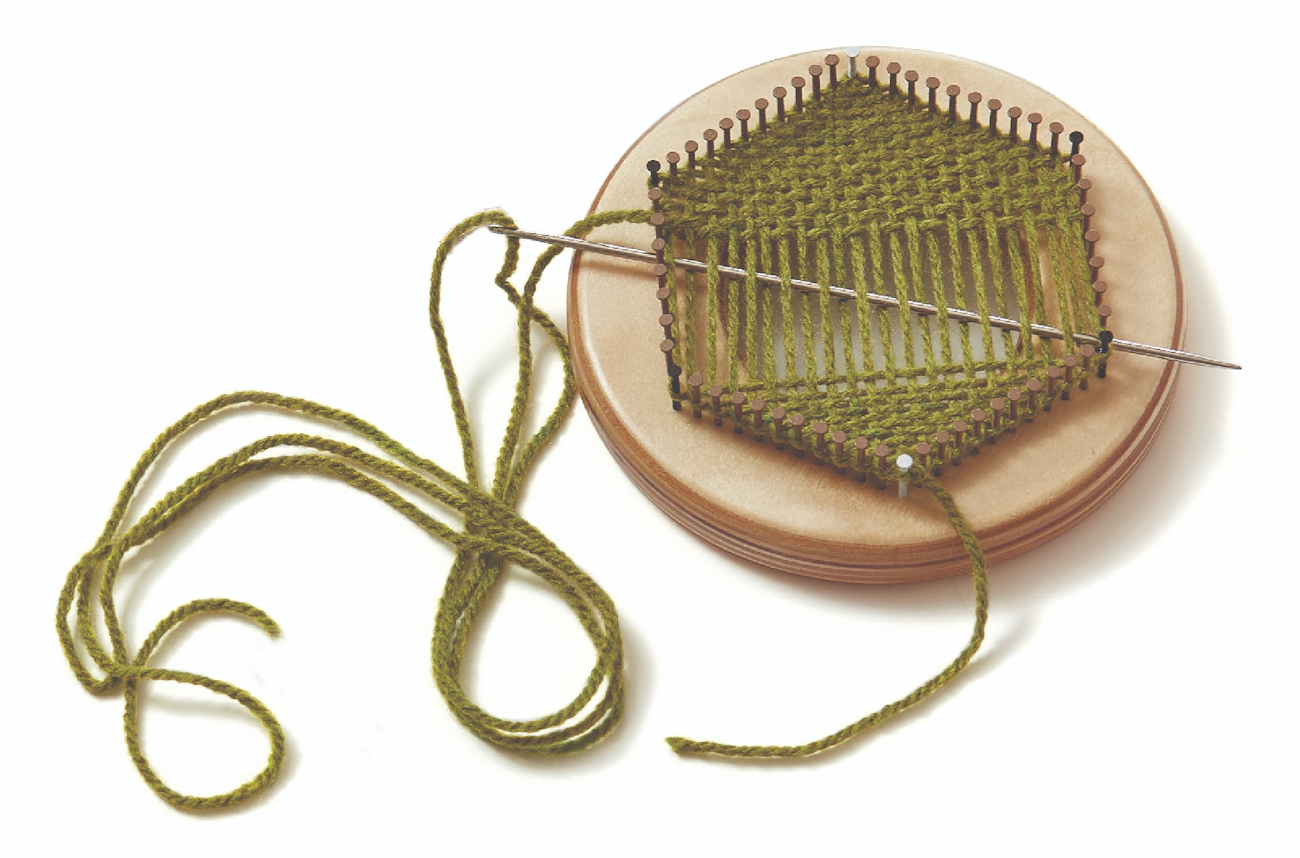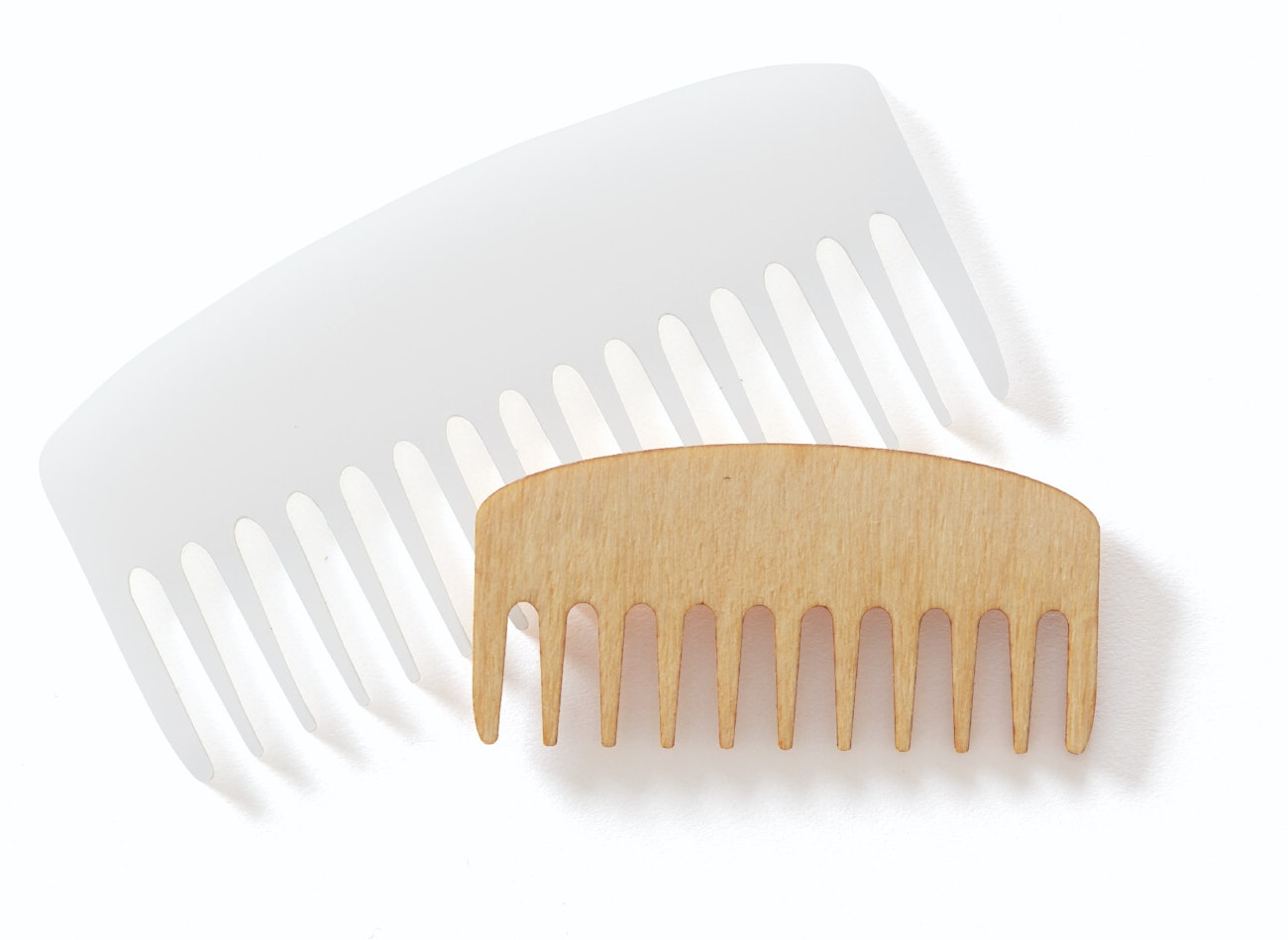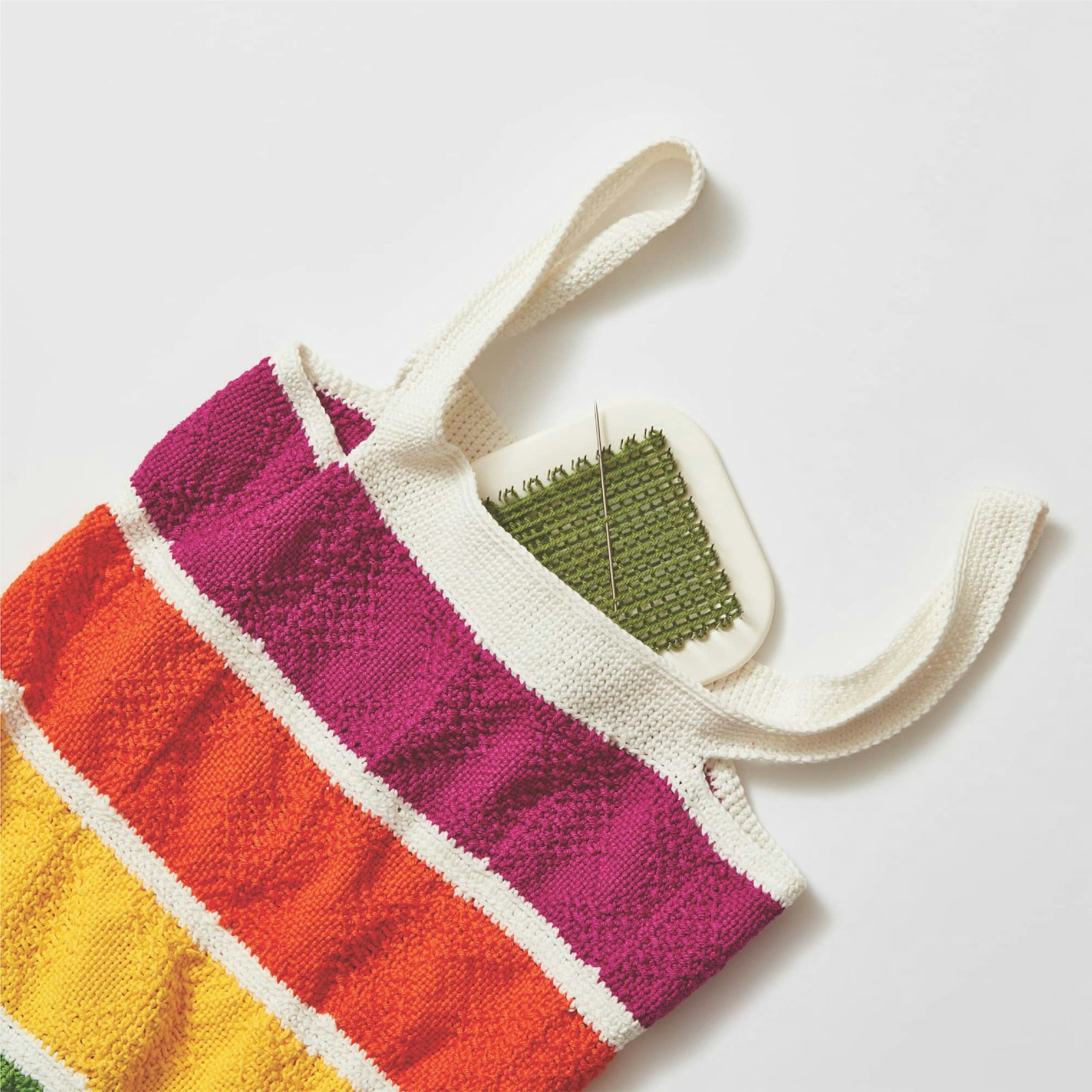A pin loom is a sweet and simple way to make cloth. The shape and size of the loom determine what you can make with it—a creative challenge to weavers to transform small pieces of fabric into inventive and sometimes three-dimensional weavings.
MUST-HAVES:
LOOM
The most common pin loom is a 4" x 4" square, but you can find pin-looms in just about any shape! The hexagon loom, shown here, is also a favorite among pin-loom weavers as are triangle and rectangle looms of all sizes.
 Hexagon loom
Hexagon loom
NEEDLES AND HOOKS
To weave with a pin loom, you will need both a weaving needle (usually about 5"–6" long) and a tapestry needle for weaving in ends. If you're weaving on a loom that uses continuous weaving or bias weaving you'll also need a crochet or locker hook. Most pin looms will come with everything you need in the package.

FORK OR COMB
You'll also need a tool to move the threads into place while weaving. Many weavers use a fork (plastic toddler forks work well for this job), plastic hair picks, or weaving combs like the ones shown here.
 Plastic and wooden weaving combs are available for pin-loom weavers.
Plastic and wooden weaving combs are available for pin-loom weavers.
YARN
Finally you'll need yarn, but what kind depends on what you want to weave and how close together your pin loom's pins are. The best yarns have some level of elasticity such as wool or acrylic. You can weave on a pin loom with inelastic fibers such as linen or cotton, but they're much easier to work with when blended with an elastic fiber.

